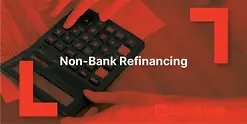How to Use Refinancing to Eliminate High-Interest Credit Card Debt
 By
Trent Bradley
·
16 minute read
By
Trent Bradley
·
16 minute read

Credit card debt is one of the most expensive forms of borrowing, with interest rates in New Zealand often exceeding twenty percent annually. For homeowners carrying significant credit card balances, the interest charges alone can cost thousands of dollars each year while making little impact on the principal balance. Refinancing your mortgage to pay off credit card debt can be a powerful strategy to escape this cycle, dramatically reducing your interest costs and accelerating your path to being debt-free.
Table of Contents
- The Credit Card Debt Trap
- Why Refinancing Works for Credit Card Elimination
- Calculating Your Potential Savings
- Step-by-Step Process for Eliminating Credit Cards Through Refinancing
- Strategies for Staying Credit Card Debt-Free
- Warning Signs You're Heading Back into Debt
- When Credit Card Consolidation Isn't the Answer
- Professional Support for Credit Card Elimination
- Frequently Asked Questions
Key Takeaways
- Credit card interest rates (18-25%) cost more than triple mortgage rates (5.5-6.5%)—$20,000 credit card debt at 21% costs $4,200 annually in interest versus $1,200 at 6% mortgage rates, saving $3,000 yearly
- Minimum payments keep borrowers in debt for decades—$15,000 credit card balance at 21% with 3% minimum payments takes approximately 29 years to pay off, costing $22,000 in interest (more than the original debt)
- Refinancing $24,000 credit card debt into mortgage saves approximately $3,600 annually in interest and frees up $575 monthly cash flow, with break-even on refinancing costs typically within 6 months
- Maintaining previous total payment amounts accelerates elimination—$20,000 credit card debt takes 11 years with minimum payments versus under 3 years refinanced at mortgage rates with same $600 monthly payment
- The most critical step is closing credit accounts or drastically reducing limits after consolidation—statistics show significant percentages of people re-accumulate credit card debt within years, ending worse off than before
- Build emergency savings of at least 3 months' expenses to handle unexpected costs without credit—use improved cash flow to automatically transfer $50-100 weekly building substantial reserves over time
- Warning signs of re-accumulation include regularly spending more than you earn, using credit to cover shortfalls between pay periods, rationalizing unnecessary purchases, or avoiding looking at account balances
This comprehensive guide explains why credit card debt is so problematic, shows you exactly how refinancing can eliminate it, calculates the true savings from converting credit card debt to mortgage debt, provides strategies for using refinancing effectively to eliminate credit cards, and helps you avoid the common trap of re-accumulating credit card debt after refinancing.
The Credit Card Debt Trap
Understanding why credit card debt is so destructive helps you appreciate the urgency of addressing it and the value of refinancing as a solution.
How Credit Cards Keep You in Debt
Credit cards are designed to maximize lender profits by keeping borrowers in debt as long as possible. When you make only minimum payments on credit cards, typically just two to three percent of your balance, you're primarily paying interest with minimal principal reduction.
For example, a credit card balance of fifteen thousand dollars at twenty-one percent interest with a three percent minimum payment means your initial monthly payment is four hundred and fifty dollars. Of this, approximately two hundred and sixty-three dollars goes to interest while only one hundred and eighty-seven dollars reduces your principal.
At this rate, it would take approximately twenty-nine years to fully pay off the fifteen thousand dollars, during which you'd pay approximately twenty-two thousand dollars in interest—more than the original debt amount. This shocking reality is why credit card companies are comfortable with low minimum payments; they profit enormously from borrowers who remain in debt for decades.
The Psychological Burden
Beyond the financial cost, credit card debt creates significant psychological stress. The constant pressure of multiple credit card bills, the anxiety of high-interest charges consuming your payments, the feeling of making no progress despite regular payments, and the shame and stress associated with feeling trapped in debt all take genuine tolls on mental health and wellbeing.
Many people with credit card debt report feeling overwhelmed, hopeless, or embarrassed about their financial situation. This emotional burden affects relationships, work performance, and overall quality of life. Eliminating credit card debt therefore provides not just financial benefits but substantial quality of life improvements.
Why Credit Card Debt Accumulates
Credit card debt rarely results from a single poor decision. Instead, it typically accumulates through several common patterns. Using credit cards to cover shortfalls when living beyond your means gradually builds balances over time. Unexpected expenses like car repairs, medical costs, or home maintenance get charged to cards when emergency savings are insufficient.
Impulse purchases and lifestyle inflation—gradually spending more as income increases without building savings—contribute to growing balances. And the convenience of credit cards makes spending feel less "real" than using cash, leading to overspending without immediate awareness of the consequences.
Additionally, once balances exist, the minimum payment trap takes over. People pay minimums thinking they're managing debt responsibly, unaware that they're barely making progress and will remain in debt for decades.
Why Refinancing Works for Credit Card Elimination
Refinancing to eliminate credit card debt is effective because it leverages the enormous interest rate differential between mortgages and credit cards.
The Interest Rate Comparison
Credit card interest rates in New Zealand typically range from eighteen to twenty-five percent, with some cards charging even higher rates for cash advances or when payments are missed. By contrast, mortgage rates currently sit around five and a half to six and a half percent—less than one-third of typical credit card rates.
This differential creates massive savings potential. If you're paying twenty-two percent interest on credit card debt, refinancing to mortgage debt at six percent reduces your interest cost by more than seventy percent. Every thousand dollars of credit card debt costs you two hundred and twenty dollars annually in interest. As mortgage debt, that same thousand dollars costs just sixty dollars annually—a saving of one hundred and sixty dollars per thousand dollars of debt.
For substantial credit card balances, these savings accumulate to thousands of dollars annually, money that can be redirected toward accelerating debt elimination or building financial security.
Speed of Debt Elimination
When you maintain the same total monthly payment amount you were making toward credit cards but now apply it to lower-interest mortgage debt, you eliminate debt much faster because far more of each payment reduces principal rather than servicing interest.
Consider twenty thousand dollars in credit card debt at twenty-one percent with minimum payments of six hundred dollars monthly. At this rate, you'd take approximately eleven years to eliminate the debt and pay nearly twenty-seven thousand dollars in total interest.
If you refinance this debt into your mortgage at six percent and maintain the six hundred dollar monthly payment toward it, you'd eliminate the debt in just under three years and pay only one thousand nine hundred dollars in total interest—a saving of over twenty-five thousand dollars and eight years of debt servicing.
Simplified Financial Management
Multiple credit card balances across different cards mean tracking multiple payment dates, amounts, and interest rates. This complexity creates opportunities for mistakes, missed payments that trigger penalty rates, and constant mental burden tracking everything.
Consolidating credit card debt into your mortgage creates one payment, one interest rate, and one balance to track. This simplification reduces stress and makes financial management substantially easier.
Calculating Your Potential Savings
Understanding exactly how much you'll save by refinancing to eliminate credit cards helps you evaluate whether refinancing costs are justified.
Step One: Document Current Credit Card Debt
List all credit cards with balances including the card issuer, current balance, interest rate, and current monthly payment. Don't underestimate or hide any cards—complete accuracy is essential for proper planning.
For example, your credit card situation might include a bank credit card with twelve thousand dollars at twenty-two percent paying three hundred and sixty dollars monthly, a store card with four thousand dollars at twenty-four percent paying one hundred and twenty dollars monthly, and a low-rate card with eight thousand dollars at eighteen percent paying two hundred and forty dollars monthly, totaling twenty-four thousand dollars across three cards with combined monthly payments of seven hundred and twenty dollars.
Step Two: Calculate Current Interest Costs
For each card, multiply the balance by the annual interest rate to determine annual interest cost. In our example, the bank card costs two thousand six hundred and forty dollars annually, the store card costs nine hundred and sixty dollars, and the low-rate card costs one thousand four hundred and forty dollars, totaling five thousand and forty dollars paid annually just in credit card interest.
This is money that disappears without reducing your debt—pure cost with no benefit. Seeing this figure often shocks people into recognizing the urgency of addressing credit card debt.
Step Three: Calculate Consolidated Interest Cost
If you refinanced to add twenty-four thousand dollars to your mortgage at six percent, your annual interest on this amount would be one thousand four hundred and forty dollars. Your annual interest saving is therefore five thousand and forty dollars minus one thousand four hundred and forty dollars, equaling three thousand six hundred dollars saved every year.
That's three hundred dollars monthly that's no longer disappearing into credit card interest charges—money that can accelerate debt elimination, build emergency savings, or improve your quality of life.
Step Four: Calculate Cash Flow Impact
Your current combined credit card payments total seven hundred and twenty dollars monthly. Adding twenty-four thousand dollars to your mortgage at six percent over your remaining mortgage term might increase your mortgage payment by approximately one hundred and forty-five dollars monthly, depending on your remaining term.
This means you free up approximately five hundred and seventy-five dollars in monthly cash flow. However, remember our earlier example showing that if you maintain the full seven hundred and twenty dollar payment and direct it all toward the consolidated debt, you'll eliminate it in under three years rather than stretching it over your full mortgage term.
Step Five: Account for Refinancing Costs
Include all costs of refinancing—application fees, legal fees, valuation, and any break fees. If your total refinancing cost is three thousand five hundred dollars, divide this by your monthly savings to find your break-even point.
Three thousand five hundred dollars divided by five hundred and seventy-five dollars equals approximately six months. After just half a year, you've recovered your refinancing costs through improved cash flow, with savings continuing for years thereafter.
More importantly, the three thousand six hundred dollar annual interest saving means you recover refinancing costs in less than one year through reduced interest alone, even without considering cash flow improvements.
Step-by-Step Process for Eliminating Credit Cards Through Refinancing
Following a structured process ensures your refinancing successfully eliminates credit card debt and sets you up for long-term financial success.
Step One: Commit to Financial Change
Before refinancing, honestly commit to changing the behaviors that led to credit card debt accumulation. Refinancing provides a tool, but lasting success requires genuine commitment to financial discipline.
Have frank conversations with yourself and your partner if applicable about spending patterns, identify specific behaviors or triggers that led to credit card debt, and commit to addressing these issues rather than simply seeking temporary payment relief.
Without this commitment, refinancing merely delays inevitable problems rather than solving them.
Step Two: Document All Credit Card Debt
Obtain current statements for every credit card showing exact balances, interest rates, and payment requirements. Don't overlook any cards, even those with small balances. Complete disclosure is essential for lenders and for your own planning.
Calculate your total credit card debt across all cards to understand exactly how much equity you need to access for complete elimination.
Step Three: Check Your Home Equity
Calculate whether you have sufficient equity to consolidate your credit card debt while maintaining acceptable loan-to-value ratios. You need your property's current market value, your existing mortgage balance, and your total credit card debt amount.
Subtract your mortgage balance from eighty percent of your property value to determine available equity. Ensure your credit card debt is less than this available amount. If not, you might only be able to consolidate some cards or need to reduce credit card balances before refinancing.
Step Four: Confirm Serviceability
Ensure you can comfortably afford your increased mortgage payment. While your total debt servicing will decrease, your mortgage payment specifically will increase. Lenders will assess this carefully.
Calculate what your new mortgage payment would be with the increased balance and ensure it fits comfortably in your budget alongside all other expenses.
Step Five: Apply to Refinance
Submit your refinancing application, clearly stating your intention to consolidate credit card debt and pay off cards in full. Provide comprehensive documentation of your credit card debts and demonstrate how consolidation improves your financial position.
Lenders generally view credit card consolidation favorably as it reduces your risk of financial distress by lowering your debt servicing costs and simplifying your obligations.
Step Six: Prepare for Settlement
Once approved, prepare for settlement by obtaining final balance statements from all credit card providers showing exact payoff amounts as of your settlement date. Have your credit card account numbers and provider contact details readily available.
Confirm with your lawyer or mortgage adviser who will handle paying off the credit cards—sometimes lenders pay directly, while other times you receive the funds and pay cards yourself.
Step Seven: Eliminate the Cards
On settlement, ensure all credit cards are paid off completely. Obtain written confirmation from each provider that balances are zero and accounts are settled. Keep these confirmations as proof.
Then make the critical decision: close the accounts entirely or drastically reduce credit limits to eliminate temptation. This step prevents the common trap of re-accumulating credit card debt after consolidation.
Step Eight: Redirect Cash Flow Wisely
With your credit cards eliminated, you have substantially improved cash flow. Resist the temptation to simply reduce your total debt payments to your new mortgage amount. Instead, maintain your previous total payment level, directing extra funds toward mortgage principal reduction.
If you were paying seven hundred and twenty dollars monthly toward credit cards and your mortgage increased by only one hundred and forty-five dollars, continue paying the full seven hundred and twenty dollars as extra mortgage payments. This ensures you eliminate the consolidated debt quickly rather than carrying it for decades.
Strategies for Staying Credit Card Debt-Free
Eliminating credit card debt through refinancing is just the first step. Staying debt-free requires ongoing discipline and smart strategies.
Close or Severely Limit Credit Accounts
The most effective strategy for avoiding re-accumulation is closing credit card accounts entirely or reducing limits to minimal amounts. If you maintain one card for emergencies or convenience, set a low limit like two thousand dollars that prevents significant debt accumulation.
Many people feel uncomfortable closing all credit access, but this discomfort is preferable to re-accumulating tens of thousands in debt. Consider that you successfully lived without accessible credit before you had credit cards—you can do so again.
Build Emergency Savings
One reason people rely on credit cards is lacking emergency savings for unexpected expenses. Commit to building an emergency fund of at least three months' expenses so you can handle surprises without credit.
Use some of your improved cash flow from eliminating credit cards to automatically transfer money to a separate emergency savings account each pay period. Even fifty to one hundred dollars weekly builds substantial savings over time.
Implement a Cash or Debit System
Consider using cash or debit cards exclusively for discretionary spending. Research shows people spend less when using cash because it feels more "real" than credit. Physical money creates psychological barriers to overspending that credit cards eliminate.
Even if you don't use cash for everything, using it for categories where you tend to overspend—like dining out, entertainment, or shopping—can significantly reduce unnecessary expenditure.
Create and Monitor a Realistic Budget
Develop a detailed monthly budget that accounts for all income and expenses including irregular expenses like car registration, insurance, and gift-giving. Track actual spending against your budget to identify problem areas.
Use budgeting apps or spreadsheets that help you stay accountable. Review your budget weekly rather than letting things slide until month-end when it's too late to adjust.
Address Emotional Spending
For many people, credit card debt stems from emotional spending—using shopping or spending to cope with stress, boredom, or unhappiness. If this resonates with you, develop alternative coping strategies that don't involve spending.
Exercise, hobbies, social connections, and creative pursuits provide healthier outlets for emotional needs than shopping. Consider counseling if emotional spending patterns are deeply ingrained or linked to other psychological issues.
Automate Savings and Debt Payments
Set up automatic transfers that move money to savings or extra mortgage payments before you have opportunity to spend it. Automation removes the need for constant willpower and ensures your financial goals get funded first.
Pay yourself first through automatic savings transfers, schedule extra mortgage payments automatically each pay period, and remove barriers between good intentions and actual financial progress.
Celebrate Milestones Without Spending
As you pay down consolidated debt and build financial security, celebrate progress in ways that don't involve spending money you've freed up. Recognize milestones like being one year credit card debt-free, reaching savings goals, or reducing your mortgage by specific amounts.
Celebrations can include free or low-cost activities that acknowledge progress without undermining your financial improvement through expensive rewards that reduce the benefits you've achieved.
Warning Signs You're Heading Back into Debt
Stay alert for warning signs that old patterns are re-emerging so you can address them before problems escalate.
Watch for These Red Flags
Be concerned if you notice yourself regularly spending more than you earn even slightly, using credit cards or overdrafts to cover shortfalls between pay periods, feeling unable to say no to purchases you know you can't afford, or hiding spending from partners or avoiding looking at account balances.
Additional warning signs include rationalizing purchases you don't need with excuses about "deserving" them, feeling anxious or stressed about money despite improved circumstances after consolidation, or carrying revolving balances on credit cards if you've maintained accounts.
If you observe any of these patterns, take immediate action before problems worsen. Seek support from financial counselors, accountants, or supportive friends who can help you course-correct before sliding back into serious debt.
When Credit Card Consolidation Isn't the Answer
While refinancing to eliminate credit cards benefits many homeowners, it's not appropriate for everyone or every situation.
Signs You Shouldn't Consolidate Yet
Avoid consolidating through refinancing if you haven't addressed underlying spending problems or addictive behaviors around shopping and spending. If you lack genuine commitment to financial discipline after consolidating, if you have insufficient equity to consolidate without creating risky high loan-to-value ratios, or if you can't afford increased mortgage payments even with reduced total debt servicing, wait.
Also reconsider if you're planning to sell your property soon and won't benefit long enough to justify refinancing costs, if you've recently consolidated or refinanced and are facing a repeating cycle, or if your credit card debt is relatively small and refinancing costs exceed your savings over realistic timeframes.
Alternative Approaches to Consider
For smaller credit card balances or those lacking sufficient equity, consider aggressive payment strategies like debt avalanche or snowball methods. Balance transfer credit cards with promotional zero percent rates can provide temporary relief. Credit counseling and debt management programs offer structured support without refinancing.
Or simply implement strict budget discipline and aggressive payment while freezing credit card use can eliminate debt without increasing your mortgage.
Refinancing is powerful but not the only tool. Use it when circumstances genuinely suit consolidation rather than forcing it when alternatives better fit your situation.
Professional Support for Credit Card Elimination
Eliminating credit card debt through refinancing benefits from professional guidance to ensure success.
At Luminate Financial Group, we help New Zealand homeowners eliminate credit card debt by calculating realistic savings after all costs, assessing whether you have sufficient equity and income to consolidate successfully, structuring refinancing to eliminate cards completely while maintaining financial security, and providing honest feedback about whether consolidation suits your situation or whether alternative strategies might work better.
We also connect you with financial counseling resources if addressing underlying behavioral issues is essential for long-term success. Our goal is ensuring credit card elimination through refinancing genuinely improves your financial position and leads to lasting debt freedom rather than temporary relief followed by re-accumulation.
Sometimes the most valuable service we provide is telling people they're not ready to consolidate yet and need to address behavioral issues first. Short-term disappointment in this advice prevents long-term disaster from premature consolidation without adequate preparation for sustaining results.
Frequently Asked Questions
How much can I actually save by refinancing to eliminate credit card debt?
Calculate savings by comparing current interest costs versus consolidated costs. For example, $24,000 credit card debt across three cards (at 18-24% interest) costing $5,040 annually in interest consolidated into mortgage at 6% costs $1,440 annually—saving $3,600 per year or $300 monthly. Additionally, current combined payments of $720 monthly might only increase your mortgage payment by $145, freeing up $575 monthly cash flow. However, maintain the full $720 payment directing it toward the consolidated debt to eliminate it in under 3 years rather than stretching over your full mortgage term. Factor in refinancing costs (typically $3,000-$4,000)—dividing by monthly savings gives your break-even point (approximately 6 months in this example).
Why do minimum credit card payments keep me in debt so long?
Minimum payments (typically 2-3% of balance) are designed to keep borrowers in debt as long as possible, maximizing lender profits. For $15,000 balance at 21% interest with 3% minimum payment, your initial $450 monthly payment includes approximately $263 to interest and only $187 reducing principal. At this rate, you'd take approximately 29 years to fully pay off the $15,000, paying approximately $22,000 in interest—more than the original debt amount. Credit card companies profit enormously from borrowers remaining in debt for decades. By contrast, refinancing the same debt into your mortgage at 6% and maintaining $450 monthly payments eliminates the debt in under 3 years with only $1,400 total interest—saving $20,600 and 26 years.
What's the step-by-step process for eliminating credit cards through refinancing?
The process involves: (1) committing to changing spending behaviors that led to debt accumulation—refinancing provides a tool but requires genuine financial discipline, (2) documenting all credit card debt with current balances, interest rates, and payments from every card, (3) checking home equity to ensure you have sufficient equity (total credit card debt should be less than available equity at 80% LVR), (4) confirming serviceability that you can afford increased mortgage payment comfortably, (5) applying to refinance clearly stating intention to consolidate and pay off cards in full, (6) preparing for settlement with final balance statements from all providers, (7) eliminating cards by paying off completely and obtaining written confirmation, then closing accounts or drastically reducing limits, and (8) redirecting cash flow wisely by maintaining previous total payment level as extra mortgage payments to eliminate consolidated debt quickly.
How can I prevent re-accumulating credit card debt after consolidation?
Critical prevention strategies include closing credit accounts entirely or reducing limits to minimal amounts (maintain one card with $2,000 limit maximum if needed for emergencies), building emergency savings of at least 3 months' expenses using improved cash flow to automatically transfer $50-100 weekly, implementing cash or debit system for discretionary spending (physical money creates psychological barriers credit cards eliminate), creating and monitoring realistic monthly budgets tracking actual spending against plans, addressing emotional spending by developing alternative coping strategies (exercise, hobbies, social connections instead of shopping), automating savings and debt payments removing need for constant willpower, and celebrating milestones without spending through free or low-cost activities. Stay alert for warning signs like regularly spending more than you earn, using credit to cover shortfalls, or avoiding looking at account balances.
When should I avoid consolidating credit card debt through refinancing?
Avoid consolidation if you haven't addressed underlying spending problems or addictive shopping behaviors—refinancing without behavioral change merely delays problems rather than solving them. Also avoid if you lack genuine commitment to financial discipline after consolidating, have insufficient equity to consolidate without risky high loan-to-value ratios, can't afford increased mortgage payments even with reduced total debt servicing, are planning to sell property soon (won't benefit long enough to justify costs), have recently consolidated and are facing a repeating cycle, or have relatively small credit card debt where refinancing costs exceed savings over realistic timeframes. Consider alternatives like aggressive payment strategies (debt avalanche/snowball methods), balance transfer cards with promotional 0% rates, credit counseling programs, or strict budget discipline with frozen credit card use.
What happens if I re-accumulate credit card debt after consolidating?
Re-accumulating credit card debt after consolidating creates a worse situation than before—you end up with both a larger mortgage (including the consolidated debt) and new high-interest credit card balances. Statistics show significant percentages of people who consolidate end up re-accumulating consumer debt within a few years. This pattern is why addressing underlying spending behaviors is critical before consolidating. If you notice warning signs (regularly spending more than you earn, using credit between pay periods, rationalizing unnecessary purchases, hiding spending from partners, feeling anxious about money despite improved circumstances), take immediate action. Seek support from financial counselors, accountants, or supportive friends who can help you course-correct before sliding back into serious debt. Consolidation only provides lasting benefit when combined with genuine behavioral change.
How quickly can I eliminate consolidated credit card debt?
Elimination speed depends on payment amounts maintained. If you maintain the same total monthly payment you were making toward credit cards and apply it all to the consolidated mortgage debt, you eliminate it much faster because far more of each payment reduces principal rather than servicing interest. For example, $20,000 credit card debt at 21% with $600 monthly minimum payments takes approximately 11 years to eliminate with $27,000 total interest paid. Refinanced into mortgage at 6% with the same $600 monthly payment eliminates the debt in just under 3 years with only $1,900 total interest—saving over $25,000 and 8 years. The key is maintaining your previous total payment amount rather than simply reducing payments to your new minimum mortgage amount. Resist the temptation to use improved cash flow for increased spending.
What are the emotional and psychological benefits of eliminating credit card debt?
Beyond financial savings, eliminating credit card debt provides substantial quality of life improvements by removing constant pressure of multiple credit card bills, reducing anxiety from high-interest charges consuming payments, eliminating feelings of making no progress despite regular payments, and reducing shame and stress from feeling trapped in debt. Many people with credit card debt report feeling overwhelmed, hopeless, or embarrassed about their financial situation—affecting relationships, work performance, and overall wellbeing. Consolidation through refinancing simplifies financial management to one payment, one interest rate, and one balance to track, reducing mental burden. The psychological relief from becoming credit card debt-free often equals or exceeds the financial benefits, improving mental health and enabling focus on positive financial goals rather than constant debt stress.
Struggling with credit card debt and want to eliminate it through refinancing? Contact Luminate Financial Group for comprehensive guidance. We'll calculate your savings, assess your readiness, and help you develop a complete strategy for achieving and maintaining credit card debt freedom.

Trent Bradley
Trent Bradley is a New Zealand financial advisor specializing in property-backed finance and investment consulting. With over 26 years of experience running his mortgage broking business, he has helped wholesale investors access high-yield property-backed loan opportunities. For the past 12 years, Trent has led Luminate Finance, a New Zealand finance company dedicated to connecting investors with secure property investment solutions.
































